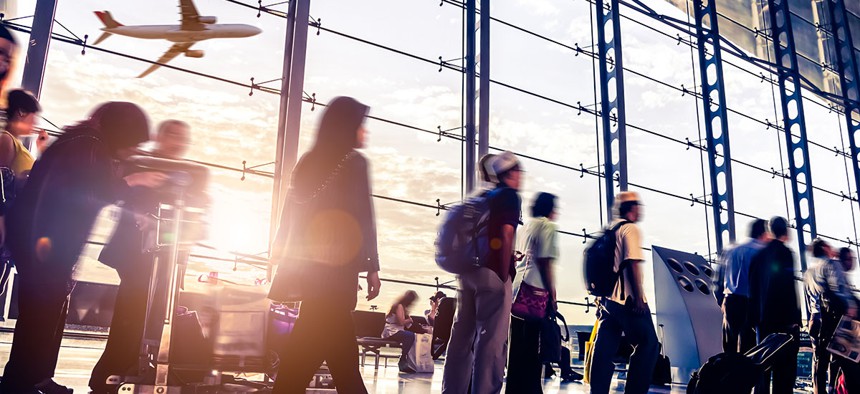DHS Wants New Facial Recognition Cameras in Airports

06photo/Shutterstock.com
Customs and Border Protection is ramping up plans for biometrics data collection.
The Homeland Security Department wants to install more cameras for facial recognition in airports.
Customs and Border Protection is looking for sources to provide "mounted facial recognition cameras" to be deployed in an "airport environment," according to a solicitation posted earlier this month.
Those would be procured through a "small business track" on DHS' indefinite delivery, indefinite quantity contract vehicle, FirstSource II.
» Get the best federal technology news and ideas delivered right to your inbox. Sign up here.
The cameras, to be deployed as part of an experiment at the Hartsfield-Jackson Atlanta International Airport, would help test the information system supporting CBP's exit protocol for travelers.
Over the summer, the agency published a request for information about ways to collect biometric data—pieces of information about an individual's unique physical characteristics—as travelers are exiting the country.
A robust biometric exit tracking system could help distinguish people who are "lawfully present in the United States from those who have violated their terms of admission." Such a system would require agents to collect both entry and exit data, and match attributes to each other for each traveler. It would also help ensure travelers were not leaving the country under other people's names.
Today, some exit data is often provided by airline carriers, according to CBP. DHS also analyzes data about the "range of encounters" travelers may have had in the country, according to that RFI—including whether they legally extended their stay or updated their citizenship status.
CBP has been focusing on designing biometric strategies at airports, but eventually hopes to expand to land and sea ports, according to that RFI.
CBP has conducted a few biometrics experiments, including at Washington Dulles International Airport and New York's John F. Kennedy International Airport where cameras collect and match travelers' photos to the ones on their passport. The agency has also distributed handheld devices to agents at international airports to aid biometric data collection.
NEXT STORY: Video: How to Celebrate Thanksgiving in Space





